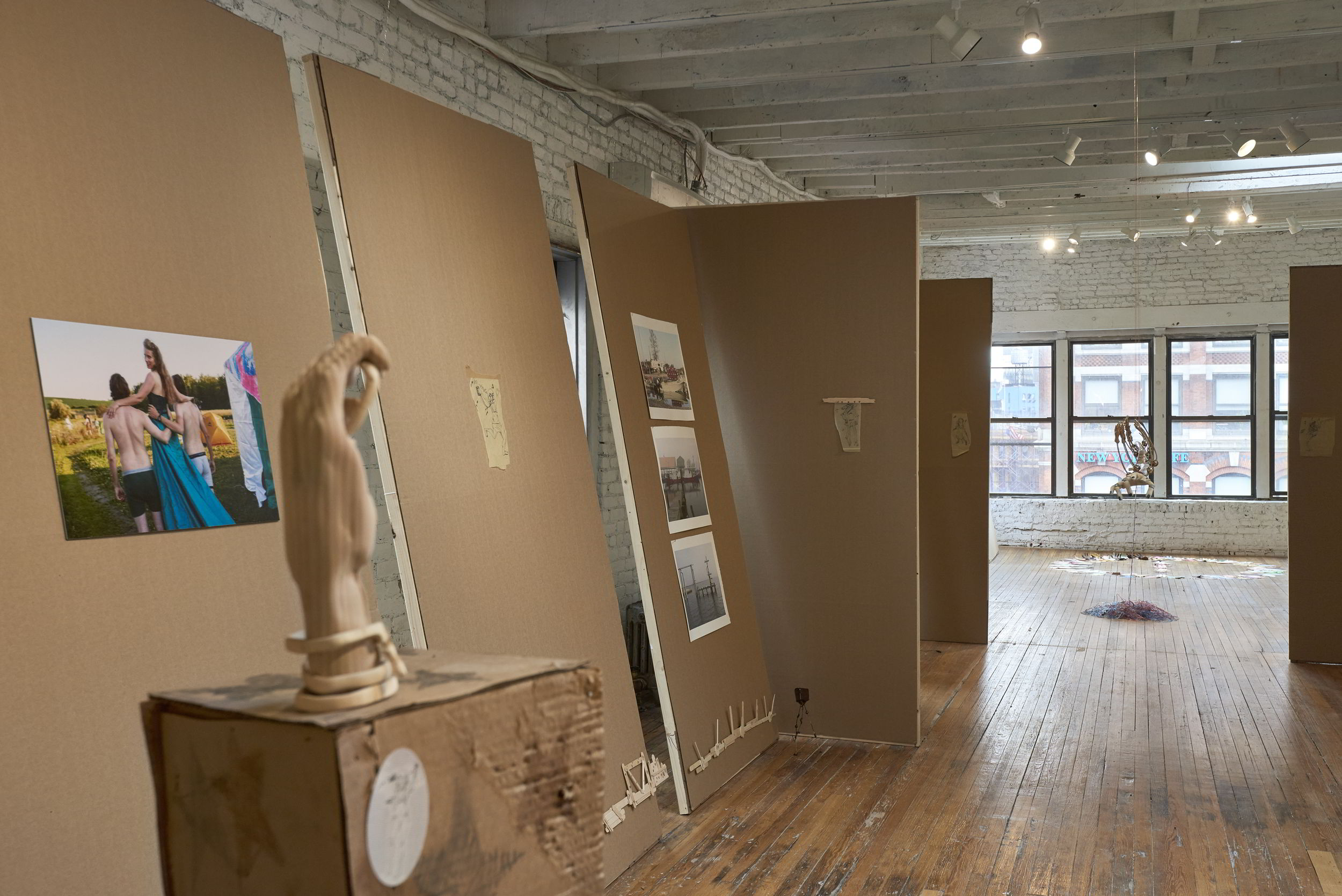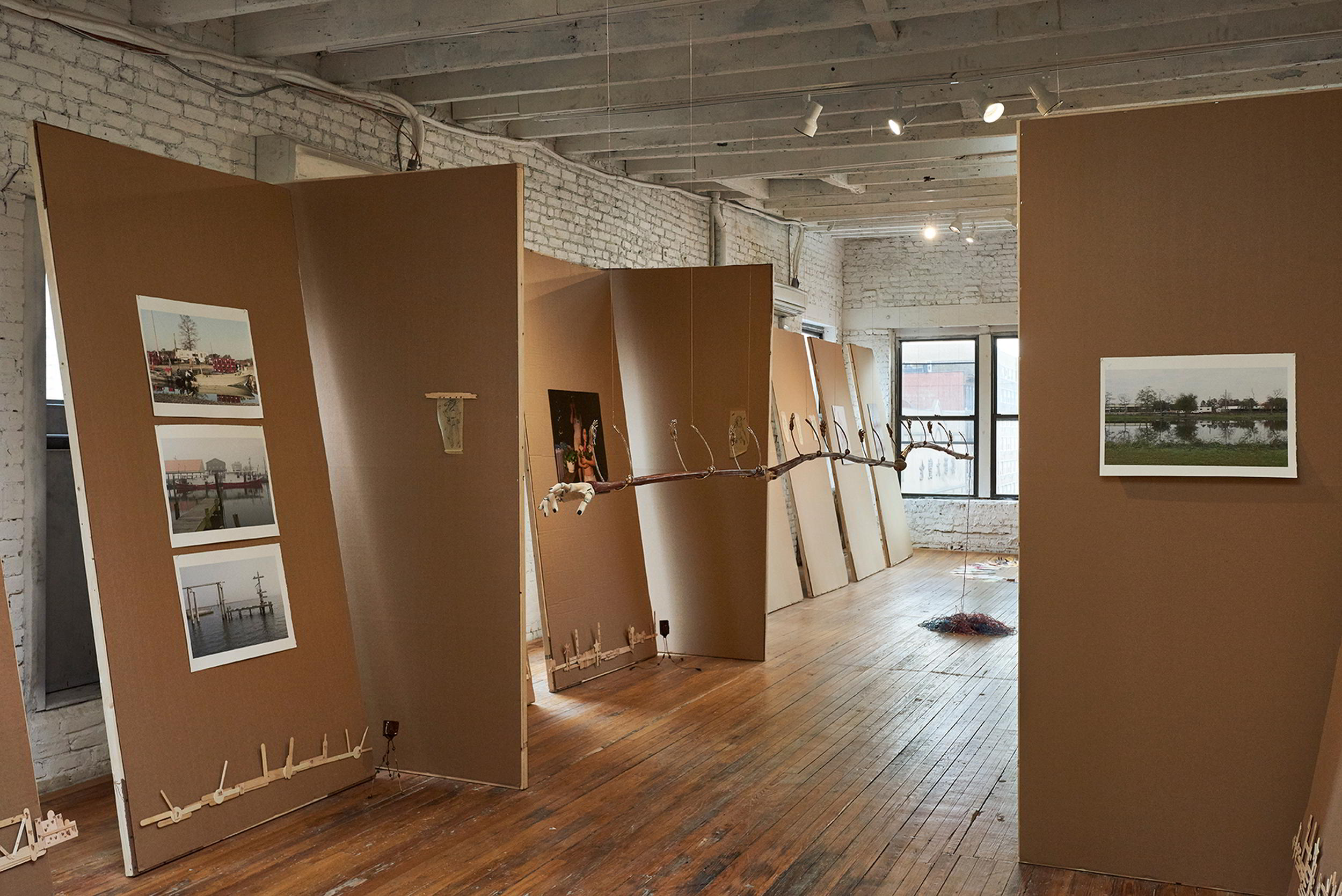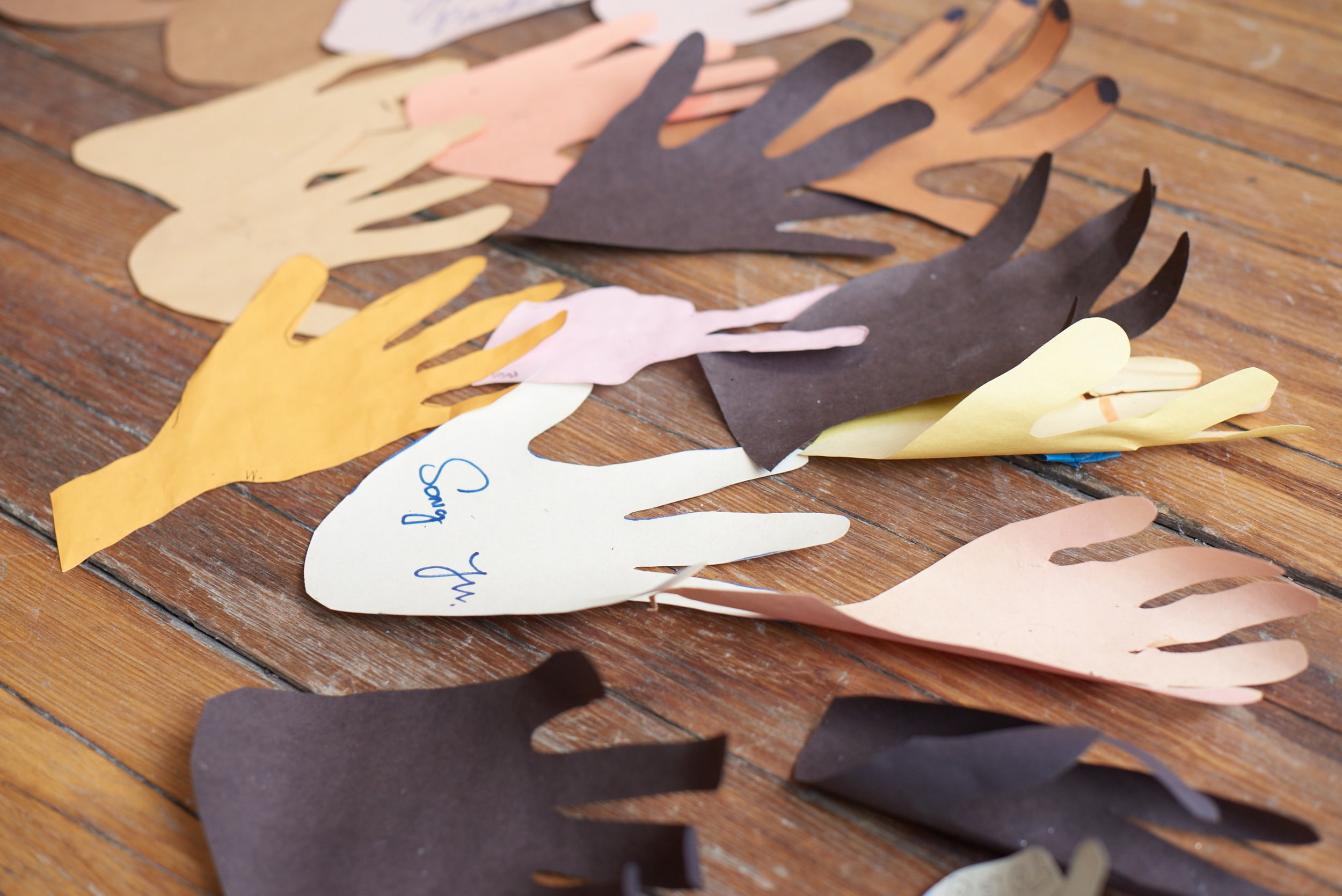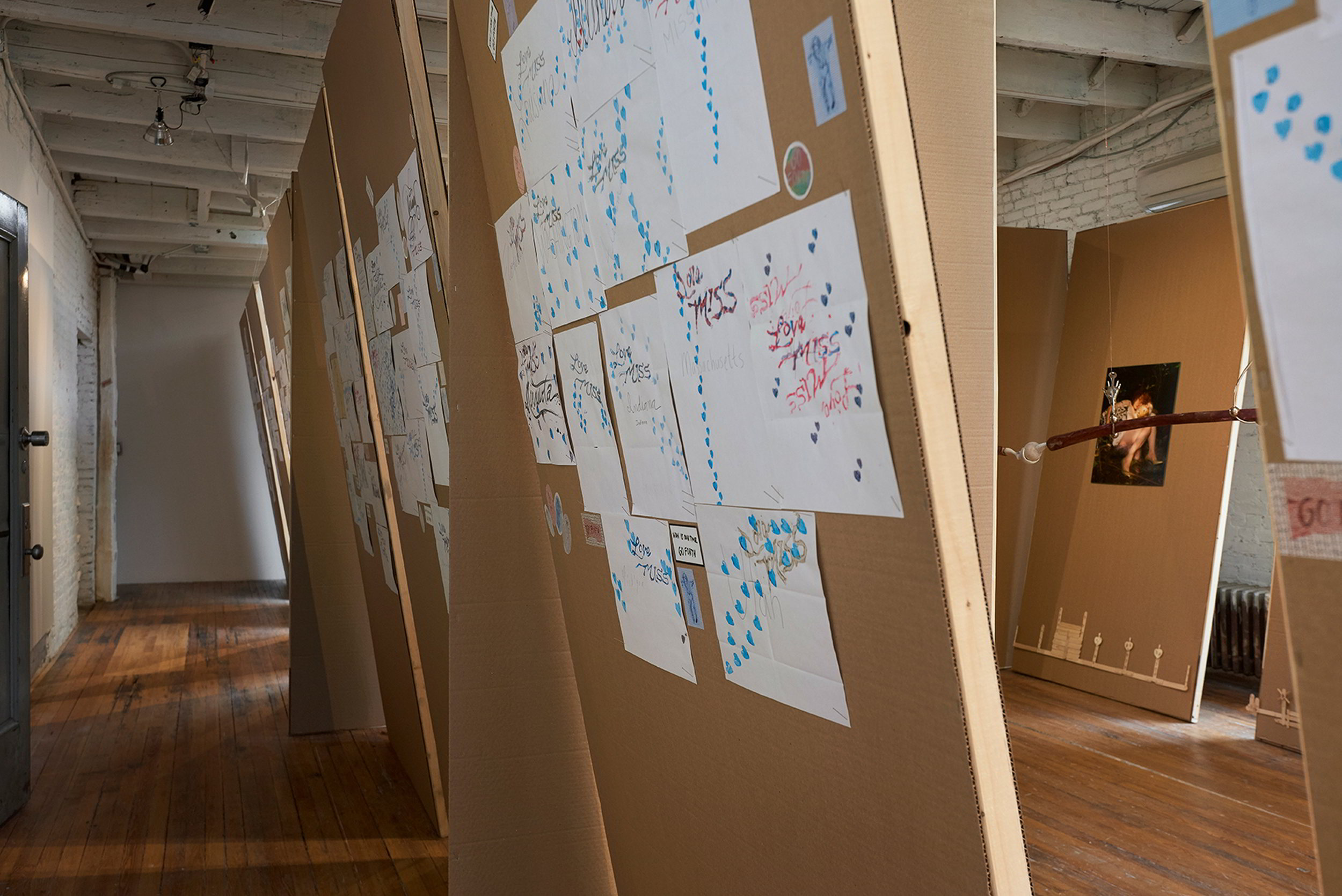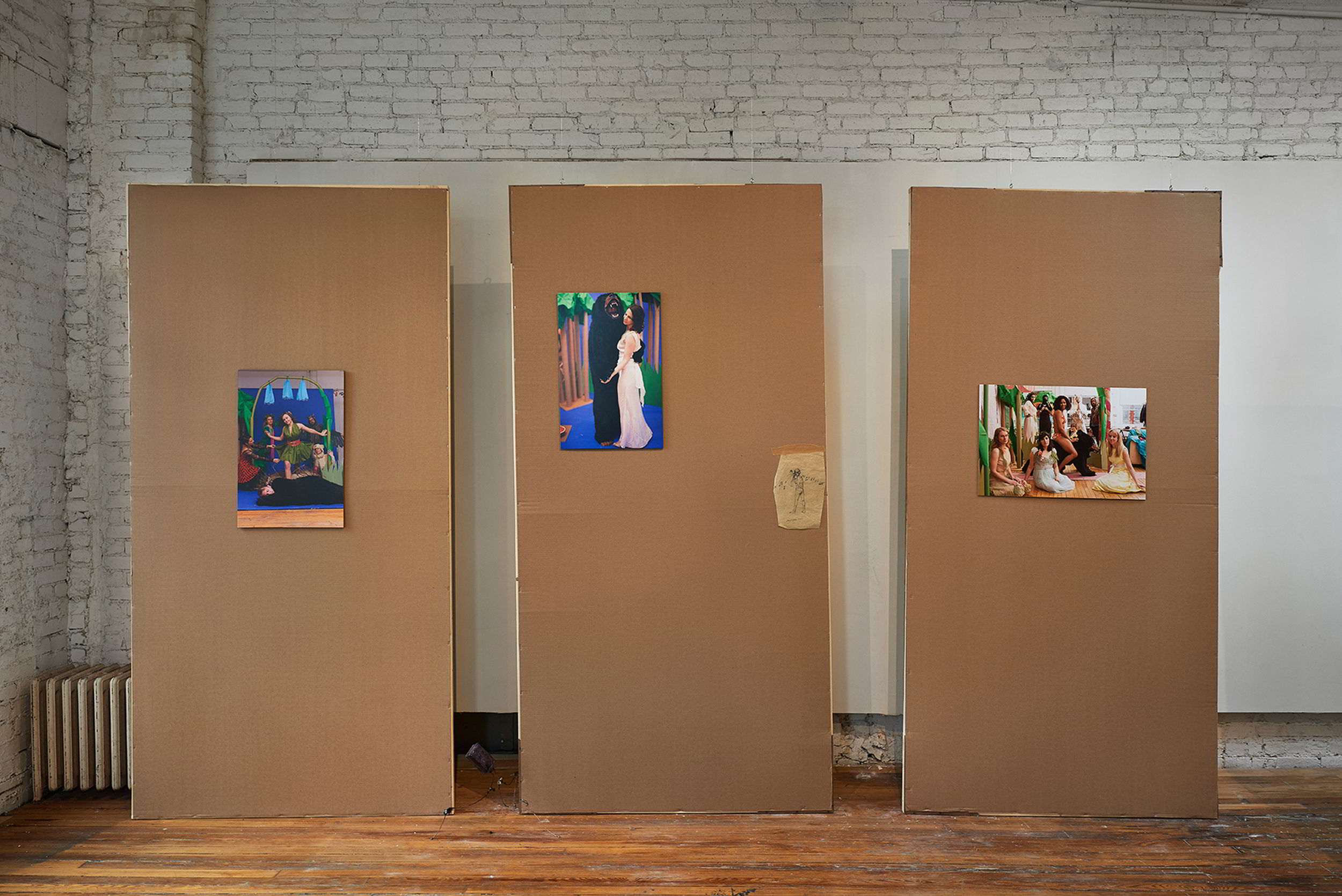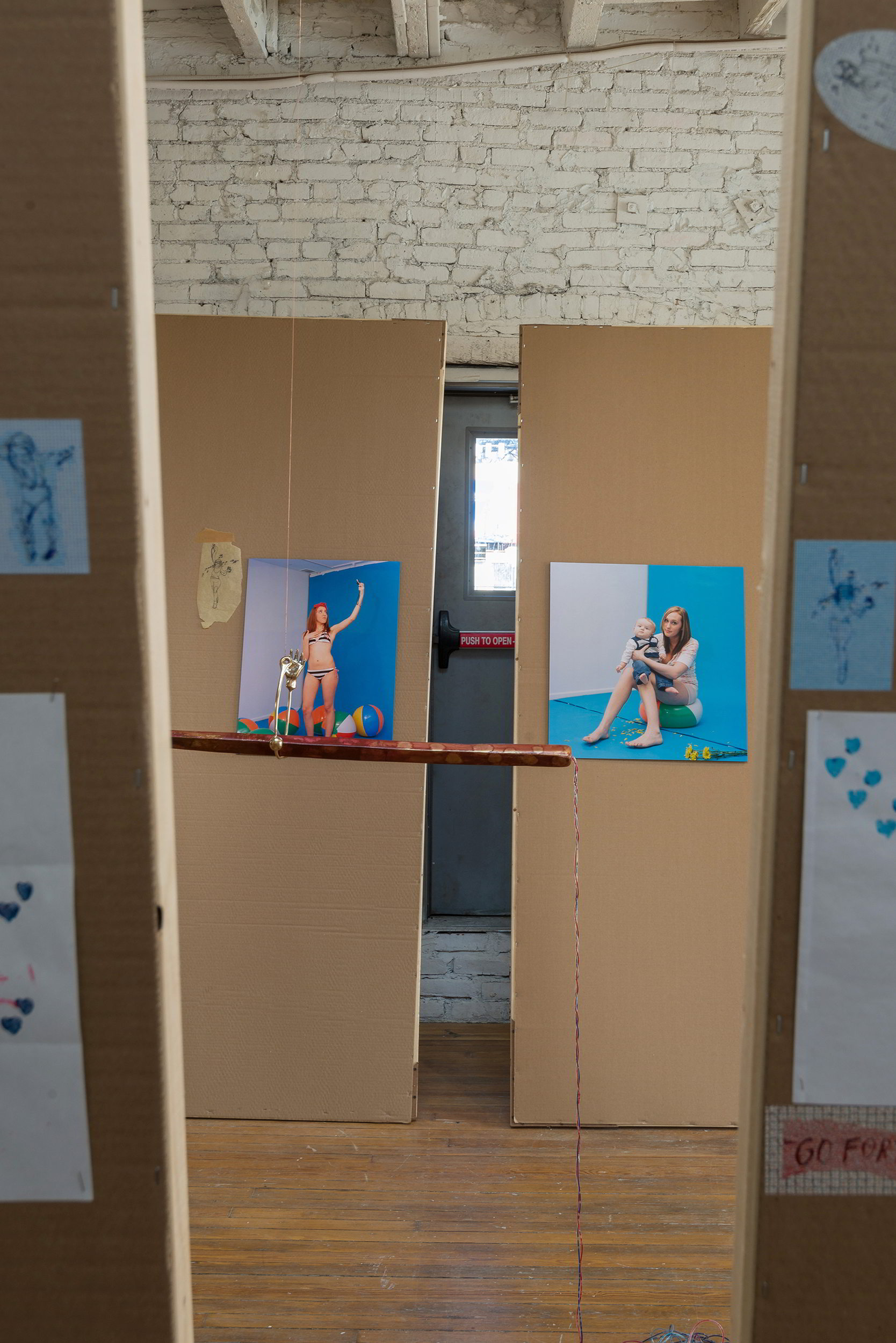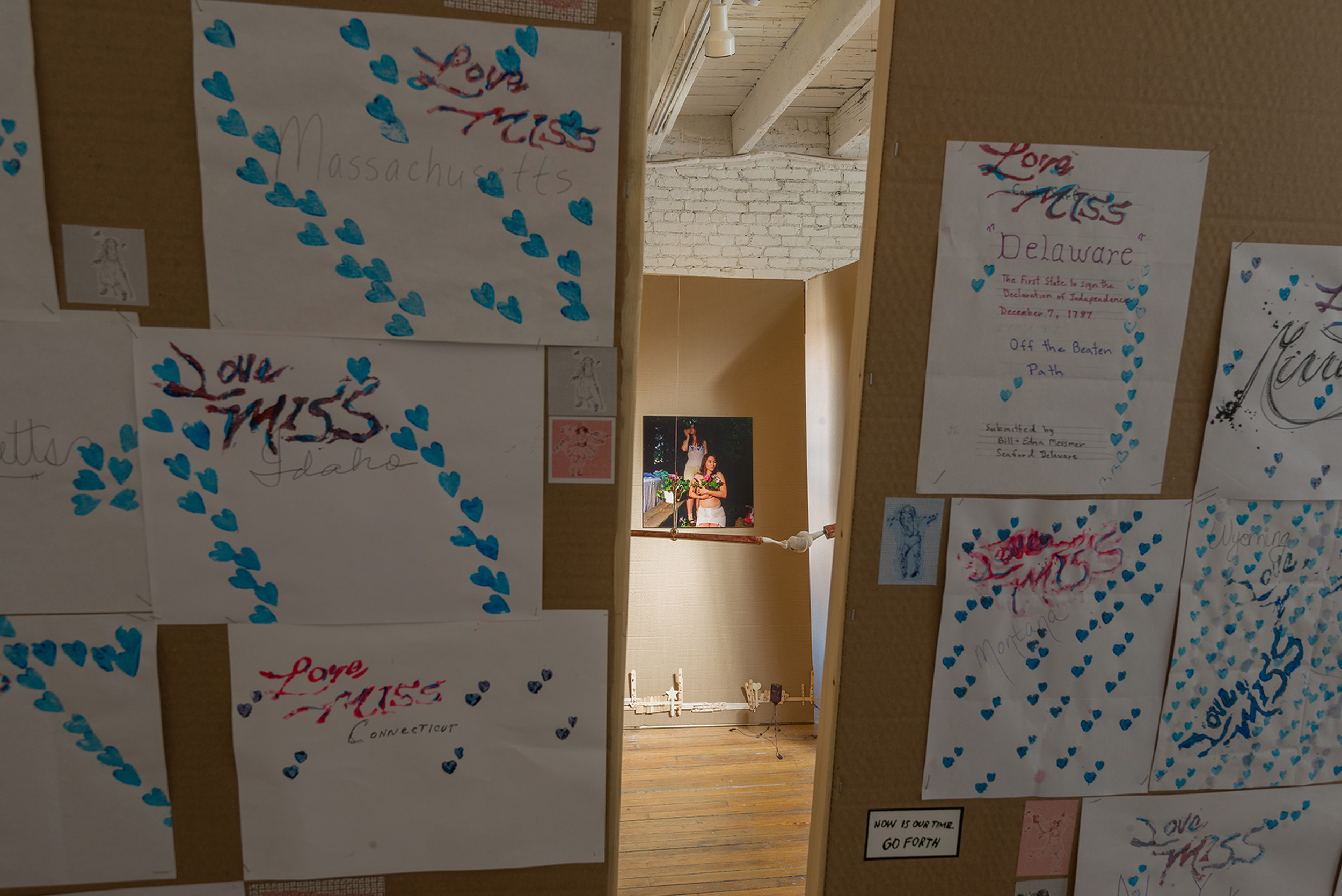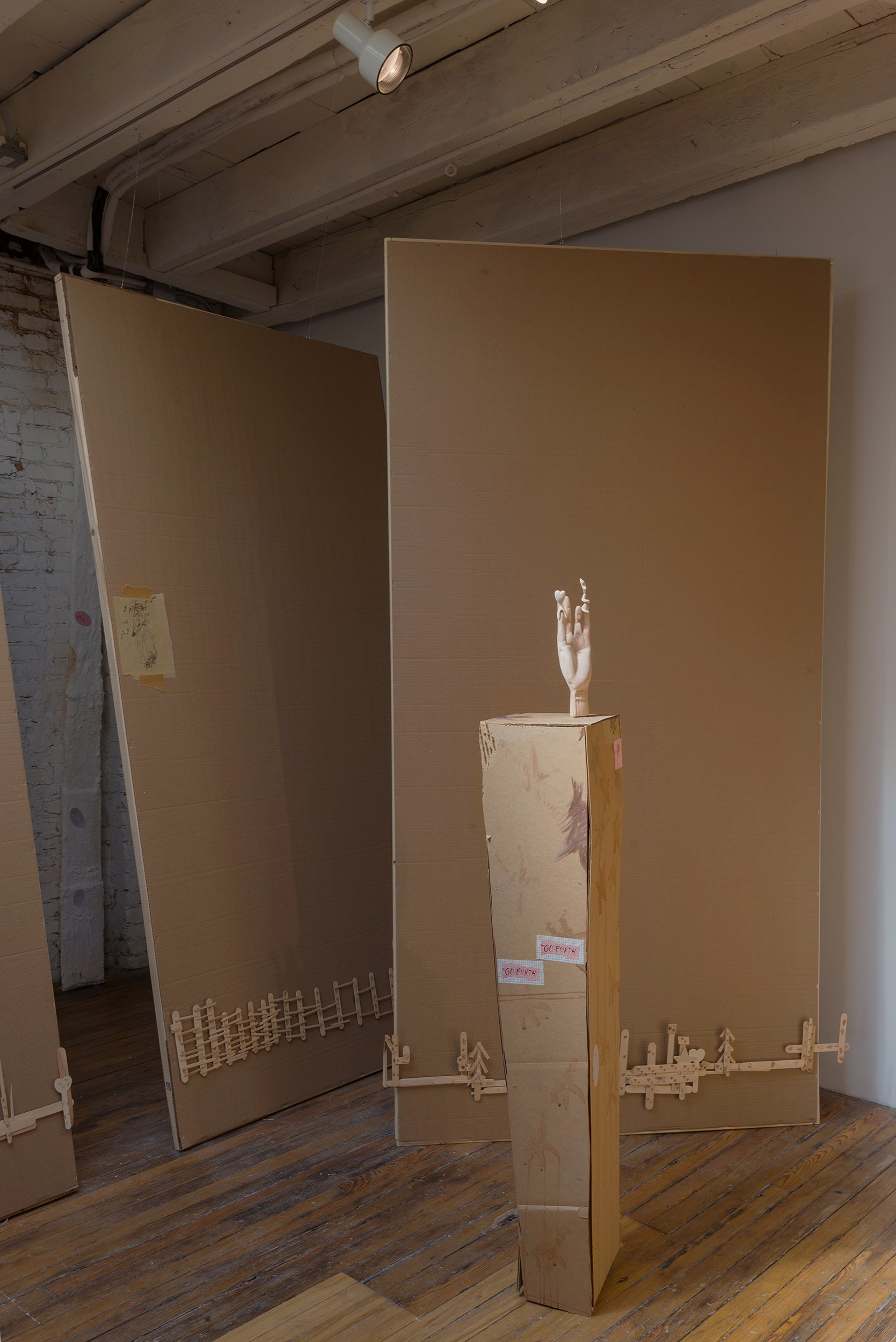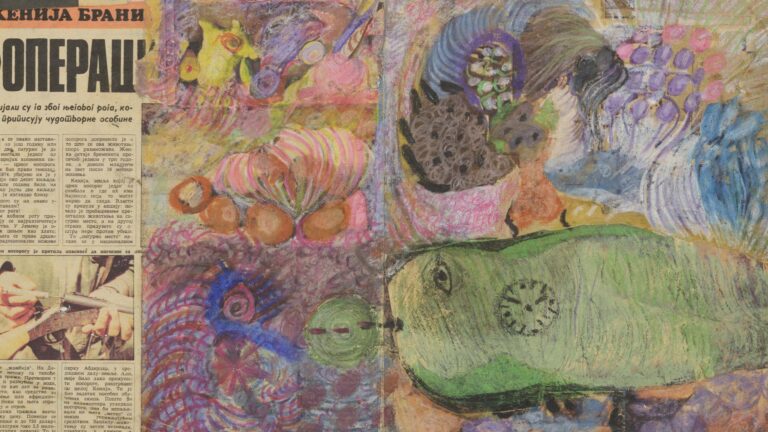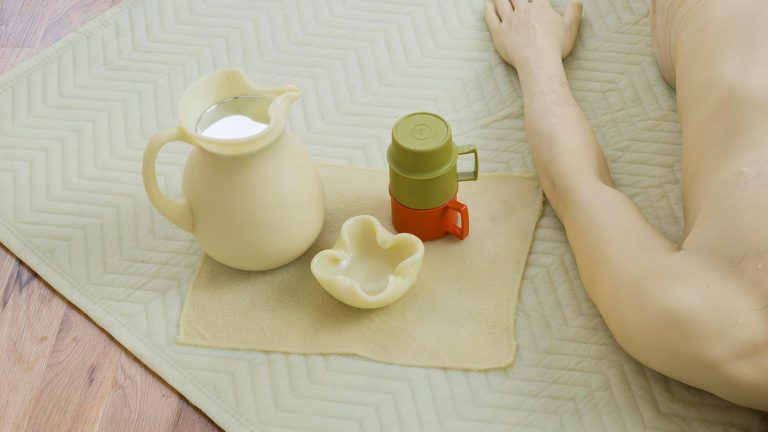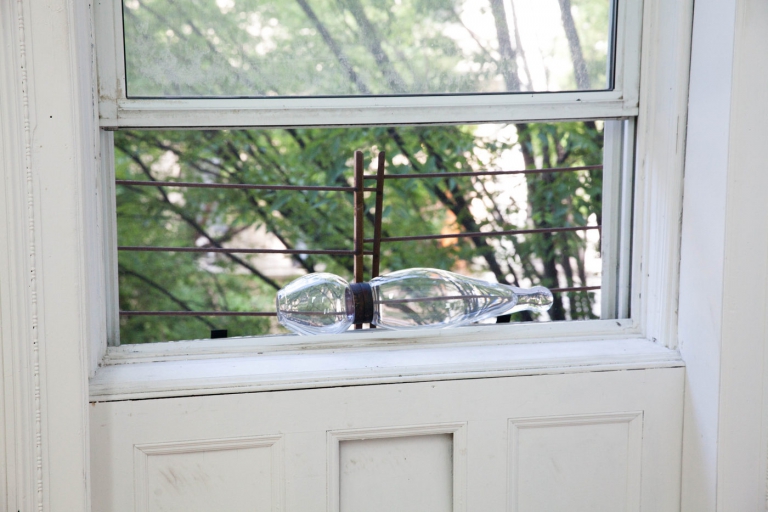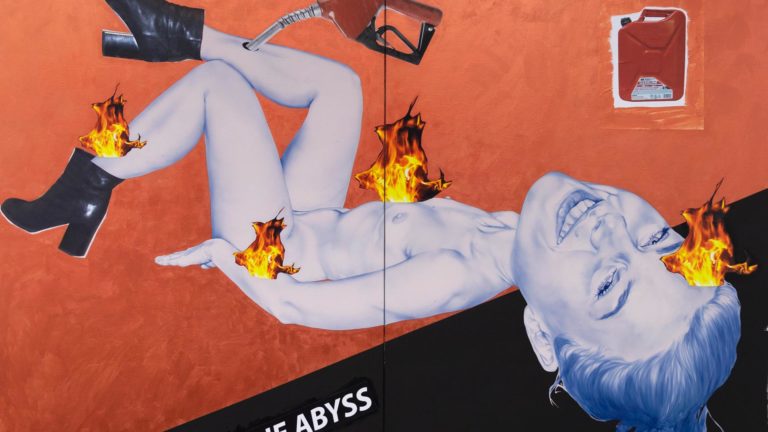Artists: Wayne Gonzales, Victoria Haynes, Chris Verene
Exhibition title: Notable American Women
Curated by: Victoria Haynes
Venue: Mx Gallery, New York, US
Date: April 5 – 25, 2018
Photography: all images copyright and courtesy of the artists and Mx Gallery, New York
“Dear Audrey,
Please forgive my handwriting. Is it not ironic that I, who spend so much attention on hands and handwriting, should be endowed with this irregular script? And my time in Normandy, Luxembourg, and Dachau did nothing to steady [my hands].”
“You know that my assignments on women in the mili-tary have emphasized the small domestic labors necessary for the survival of the feel and form of what we call our country. I said, when I started out, that I want more than anything […] to be able to follow the war to the finish over here, and more important, to watch the reconstruction or whatever of Europe. Well, here I am in the thick of ‘recon-struction’, and what chaos!”
“Against the Proto-Fascist and Fascist regimes, the people of Europe have managed simple survival; and under the messy fabric of our flag, life begins again. Bur how to live? To simply ‘go forth’ (and multiply! prosper! conquer!), is in fact a blunt prescription. It gives us no clues about how we are going to fill our larders, or how to teach our chil-dren citizenship. The “reconstruction” efforts are a shambolic, nearly Surrealiste assemblage of activities and rehearsals, rituals, parades; associations and delegations…more like a bouquet of folk arts than a systematic reestablishment of political sense. Then again, life and death cohabit here crazily; the half-alive soldiers come home to a shell shocked citizenry, for which the feat of survival seems now and then like a curse. For the soldiers faced with death, ‘survive’ was experienced as a thoughtless reflex; for the citizens at home, the keepers of the feeble political order, the command “go on” is heard with much less certainty. Yes, I can report, the fabric of the order is a frayed and hairy thing.”
“When I see the women especially, working to restore what wartime held in suspense, it strikes me that a small and unruly sense of political identity, which in fact begins in the burrows of domestic life, is returning to Europe. Return-ing, though stutteringly. But this new form of political life, in all of its chaotic disorganized clamor — is securing the habits of the order at their most granular level. You know, someone has to receive the champagne, the speech, the keys of the city,…sometimes it [is] me— for no reason except that it is a ceremony, and no other business of the municipal-ity can function until that duty is done. It is absurd to think that this municipal business – slowly developing for de-cades and decades – could have been whisked away [from these communities] by the fascists, but that is where we are.”
“I feel somewhat ashamed that my own ‘work’ consists of making images, but its what I’ve always done — so here is a small dossier of images of them [the women] that I have been collecting since 1939, and I would like to propose an exhibition of them along with images and small Surrealiste works, also of women, by Man Ray, Picasso, Roland Penrose, Margaret Bourke-White, perhaps Marguerite Higgins. I would like the exhibition to be sponsored by Vogue as you know. Vogue could also publish certain images of the exhibition, since it already has published certain of the images I am enclosing in this dossier. I would also like to include some fascimiles of letters from GI’s to their sweethearts and vice versa. I’m thinking of the all those homesick GI’s who had pointed out this land’s resemblance to the eastern states… Carolina, Virginia, New York, Maine, New Hampshire…Even I was homesick [!] It’ll be called “the European Dames, the Rugged Wrens… maybe just – and more simply, ‘Notable European Women’.”
–Lee Miller to Audrey Withers, 1946
Notable American Women, a three-person exhibition curated by Victoria Haynes inlcuding works by Wayne Gonzales, Victoria Haynes, and Chris Verene, uses Miller’s unrealized 1946 exhibition plan as a model. Following on Miller’s pro-posal, that the making of community is a kind of folk art, Gonzales, Haynes, and Verene use artistic media not only to document but also to create communities that exist at the level of imagery itself.
Each of the groups of artworks in the exhibition are firstly practices or activities, whose imagery exists as a byproduct. The byproducts — the unique scrawl of the word “Indiana” (Haynes); the portrait of a woman in a confidence-building activity (Verene); the uneasy registration of presence at the waterways in and around New Orleans (Gonzales) — exist in an in-between space; they are works unto themselves which point to a larger, longer, interpersonal (Verene), historical (Gonzales), or geographical (Haynes) practice.
Chris Verene’s portraits from the series The Self Esteem Salon – beyond being arresting captures of personality – are photographic documentation of a performance which sought out aspirants to the fashion industry and conducted work-shops to raise their self-esteem and give them insider guidance to the pitfalls (and perks!) of the industry.
Wayne Gonzales’ photographic practice has evolved in parallel to his painting practice over multiple decades, and documents the changing landscape of the New Orleans waterfront post-Katrina. Gonzales also finds the locations of historical paintings from the area and rephotographs them, finding linkages and breakages in the material continuity of the landscape from the 1800’s to today.
Victoria Haynes’ wall pieces use handwriting samples sourced from residents of each state. Over the course of a few years, she has collected intimate material from a geographically and culturally heterogenous public. Haynes’ other works seek to reach through and beyond the specificity of her correspondence work to find cadences of emotion and devotion within artistic research. “My photographs only capture the truth,” wrote Lee Miller to Audrey in 1946, “insofar as they involve my whole heart, and incur on whomever looks at them their freight: a fierce injunction to empathy.” (Miller, 1946).
Many thanks to Antony Penrose at the Lee Miller Archive and Penrose Collection for access to the 1946 Vogue Dossier entitled Notable European Women. Thanks to Ben Marcus, whose 2002 novel Notable American Women set the die spinning for many of the thoughts gathered here.
Wayne Gonzales (b. 1957, New Orleans, LA) received his BA from University of New Orleans, Louisiana. Recent solo exhibitions include: Stephen Friedman Gallery, London, UK, and Arthur Roger Gallery, New Orleans, LA. Recent group exhibitions include: Prospect New Orleans, New Orleans, LA; Whitney Museum of American Art, New York and Anton Kern Gallery, New York. Wayne lives and works in New York.
Victoria Haynes (b. 1992, Atlanta, GA) received her BFA from Rhode Island School of Design, Providence, RI. Recent exhibitions include: NYU Gallatin Online Writing, Research, and Art Space; Songs For Presidents Gallery, New York NY; Ginny Projects, London, UK and Duplex/Marvel Vision, Brooklyn NY. Victoria lives and works in New York.
Chris Verene (b. 1969, DeKalb, IL) received his MFA from Georgia State University and his BA from Emory University, Atlanta, GA. Recent exhibitions include: The Civic Art Center, Galesburg, IL; Yale University School of Art, New Haven, CT; Postmasters Gallery, New York; and Galerí Leyendecker, Tenerife, Spain. Chris lives and works in New York.



